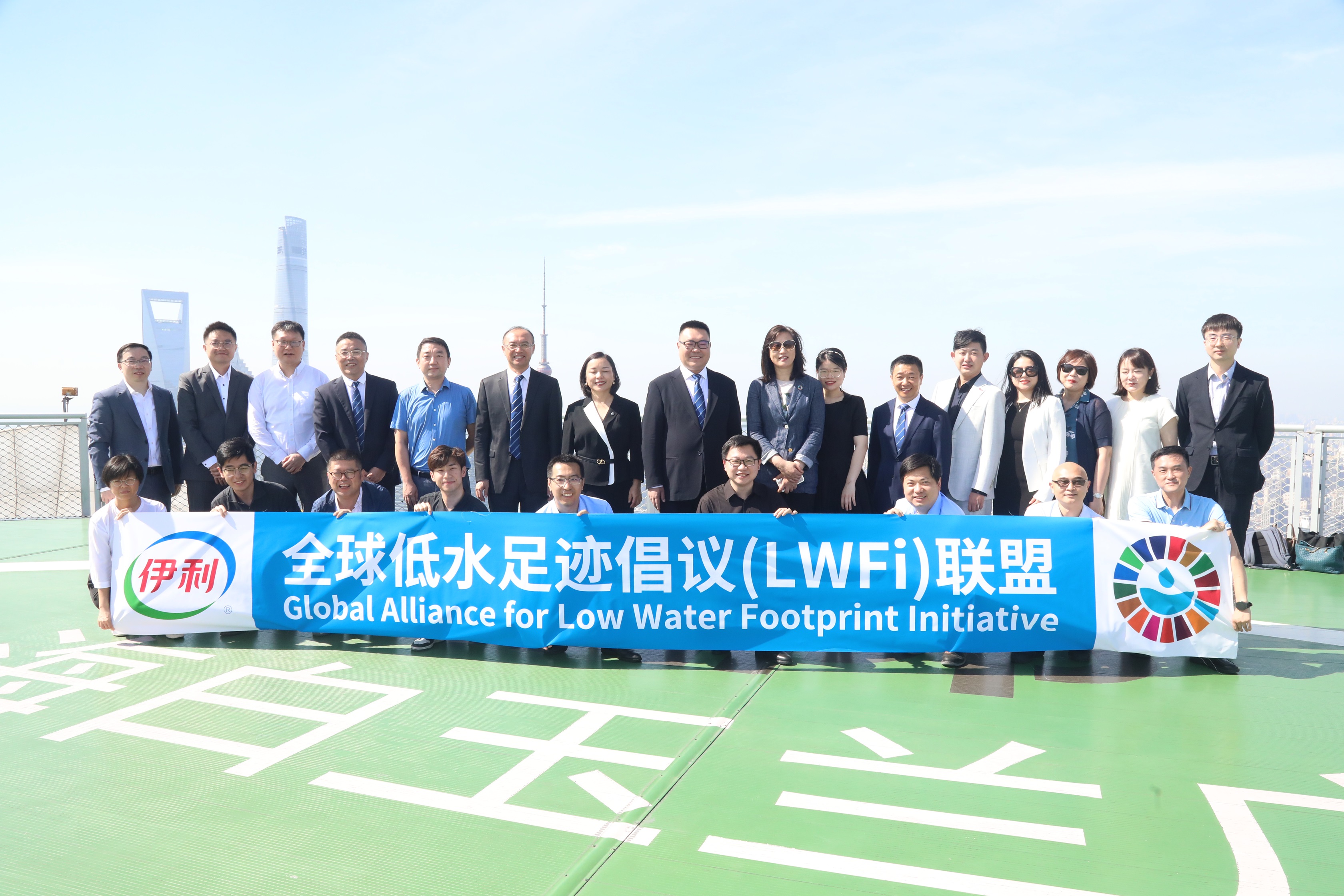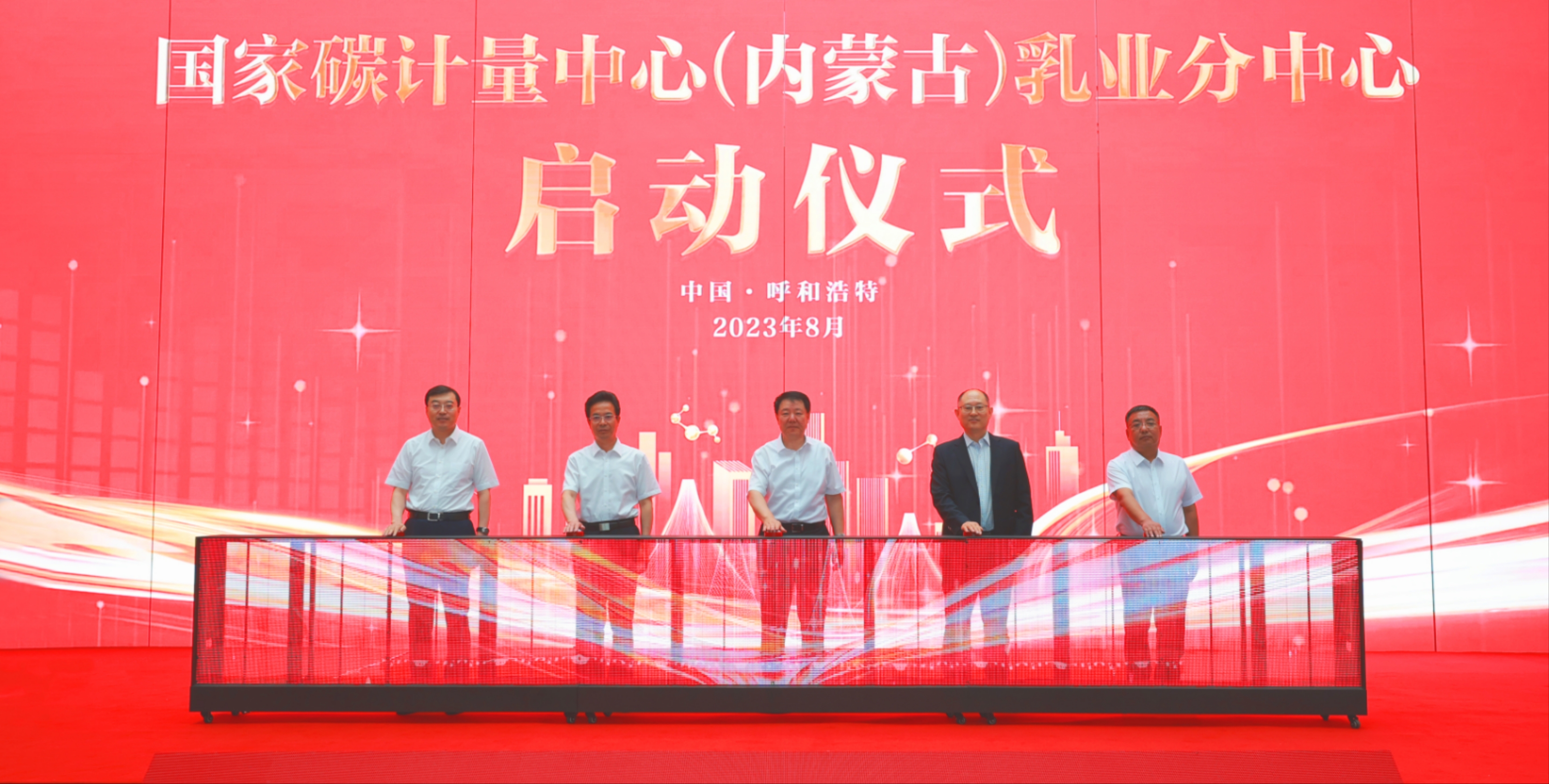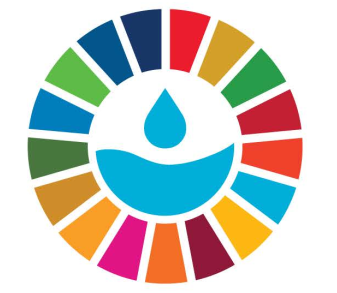Low Water Footprint Initiative (LWFi) for Dairy Industry
Inner Mongolia Yili Industrial Group Co., Ltd.
(
Private sector
)
#SDGAction51623
Description
A study based on the global milk supply in 2018 demonstrated that 628 liters of water are required to produce one liter of cow milk. In addition to milk, other dairy products that use milk as the main raw material, such as yogurt, milk powder, ice cream, cheese, etc., will consume more water per unit of product due to the water footprint of the production process and other ingredients added. Yili Group has breakdown water use in all sectors of its value chain with full life cycle assessment and is the first company in the dairy industry to propose the "Low Water Footprint Initiative". The dairy industry's "low water footprint initiative" is in line with the United Nations Sustainable Development Goal 6 (SDGs 6). Which is by 2030, substantially increase water-use efficiency across all sectors and ensure sustainable withdrawals and supply of freshwater to address water scarcity, implement integrated water resources management at all levels, including through transboundary cooperation as appropriate. To further analyze the water stress areas where Yili and its suppliers are located, Yili Group adopted the Aqueduct tool of the World Resources Institute, combined with the available water remaining (AWARE) tool developed by the WULCA Working Group of the UNEP-SETAC Lifecycle Initiative. The water stress map generated by Yili helps formulate value chain water conservation goals and plan targeted activities, such as water conservation projects and best practices within its facilities. The continuous reduction of the water footprint of Yili products helps alleviate the pressure on water resources in high-risk areas. In 2022, Yili Group aimed at regions with a high risk of water stress, sorted out water-saving potentials and carried out 322 water-saving projects, involving various products such as mineral water, milk powder, liquid milk, yogurt, and ice cream products, covering all factories. In 2022, the percentage of water consumption from alternative water sources is 4.07% and the total water-saving reached 1.7 million tons. The water resources stewardship of Yili Group is based on the self-developed digital platform. This platform not only manage the data of all water intake, water consumption and water recycling, but also be able to calculate the water footprint of the product life cycle according to international standards. Yili works with independent third-party verification and certification to make sure the digital platform is capable to provide the solid foundation for better management of water risks. In order to promote the "low water footprint initiative", Yili established a value chain alliance with 43 strategic partners in 2022. In addition to setting its own water-saving goals, it also formulated water-saving plans for value chain companies and rewarded companies that reduce their water footprints according to the plan. From the product design stage, relying on the digital water management platform, predict the water footprint of new factories and newly planned products in advance, so as to reduce the water footprint both at the product and organizational levels. The monitoring mechanism is set up to regularly check the performance of water-saving best practices and promote them.
Through the LWF initiative (LWFi), Yili will not only achieve a reduction in water consumption in its own production, but also gradually expand alternative water consumption to gradually reduce water intake and mitigate the impact of its own operations on water resources. On the other hand, through value chain alliances, promote suppliers to achieve the goal of reducing water consumption for production water, establish standards to measure the performance of the water footprint of raw materials, and achieve an overall trend of reducing the water footprint of dairy products throughout the product lifecycle, reducing scarcity pressure on local water resources.
- Youran Dairy(内蒙古优然牧业有限责任公司)
- Tetra Pak China(利乐包装中国有限公司)
- Roquette China(罗盖特(中国)营养食品有限公司)
- Longi(隆基绿能科技股份有限公司)
- Envision Group(远景科技集团)
- Bureau Veritas(必维国际检验集团)
- 济碳(上海)科技有限公司
- Luojia Capital (湖北珞珈梧桐创业投资有限公司)
- Enercomn(上海能誉科技股份有限公司)
- Treasure Carbon(上海宝碳新能源环保科技有限公司)
- Cigu 南京磁谷科技股份有限公司
- Ningbo Weland Renewable Energy Co., Ltd.(宁波威澜新能源有限公司)
- SIG Combibloc 康美包包装(上海)有限公司
- Huakang(浙江华康药业股份有限公司)
- Green Food 格瑞食品科技(天津)有限公司
- CAICT Shanghai 3IN Center 中国信通院上海工业互联网创新中心
- EqualOcean(亿欧)
- Xingfa Group 湖北兴发化工集团股份有限公司
- 上海车匠信息科技有限公司
- 内蒙古骑士集团股份有限公司
- Henan Feitian Agricultural Development Stock Co., Ltd. (河南飞天生物科技股份有限公司)
- RZBC GROUP Co., Ltd. 日照金禾博源生化有限公司
- Techno Ingredients (福建科宏生物工程股份有限公司)
- 廊坊开发区益嘉粮油食品供应链管理有限公司
- Anhui Jinhe Industrial Co., Ltd. (安徽金禾实业股份有限公司)
- Huajia Foods (江苏华稼食品科技有限公司)
- 内蒙古敕勒川糖业有限责任公司
- CABIO Biotech (Wuhan) Co., Ltd. (嘉必优生物技术(武汉)股份有限公司)
- 中粮糖业辽宁有限公司
- 中柏兴业食品科技(北京)有限公司
- Aokai Industry天津奥凯食品配料有限公司
- Shandong Bailong Chuangyuan Bio-tech Co., Ltd. 山东百龙创园生物科技股份有限公司
- Hubei Homeyard Food Co., Ltd. (湖北香园食品有限公司)
- Beijing Shuangjian Packaging Co., Ltd.北京双健塑料包装制品有限公司
- Xi’An Shuangjian Packaging Co., Ltd.西安双健包装有限公司
- Azelis 阿泽雷斯国际贸易(上海)有限公司
- Weifull Food(保定市味丰食品有限公司)
- Shanxi Walnut Agricultural Technology Co., Ltd. 山西欧莱特农业科技有限公司
- Peiran 河北沛然世纪生物食品有限公司
- 东莞泛达塑胶制品有限公司
- Wilmar International 丰益国际集团
- Kerry 凯爱瑞
- 太阳食品(天津)有限公司
- CP Kelco 斯比凯可(山东)生物制品有限公司
- 杭州塑料工业有限公司
- 苏州维港包装有限公司
- 石家庄煜恩商贸有限公司
- Glanbia Nutritionals 哥兰比亚营养品(苏州)有限公司
- Yiyu Printing Package(昆明艺宇印刷包装有限公司)
- Inner Mongolia Autonomous Region Institute of Metrology and Testing (内蒙古自治区计量测试研究院)
- China Textile Construction Planning Institute(中国纺织建设规划院)
Across China: One carton of milk and industrial carbon neutral efforts behind (Xinhua, January 20, 2024)
Yili's Sustainability Report 2022 (Yili Website, July 19, 2023)
The 1st Food Industry Green, Low Carbon, and Low Water Footprint Forum was successfully held on the North Bund (UNIDO ITPO Shanghai, June 28, 2023)
Yili Becomes the First Chinese Enterprise to Join the UN Water Action Agenda (April 18, 2023)
Yili obtains international water footprint verification both at the product and organizational levels (Yili Website, March 22, 2023)
Yili Introduces China’s First “Zero-Carbon Milk” (March 4, 2022)
SDGS & Targets
Goal 6
Ensure availability and sustainable management of water and sanitation for all
6.1
By 2030, achieve universal and equitable access to safe and affordable drinking water for all
6.1.1
Proportion of population using safely managed drinking water services
6.2
By 2030, achieve access to adequate and equitable sanitation and hygiene for all and end open defecation, paying special attention to the needs of women and girls and those in vulnerable situations
6.2.1
Proportion of population using (a) safely managed sanitation services and (b) a hand-washing facility with soap and water
6.3
By 2030, improve water quality by reducing pollution, eliminating dumping and minimizing release of hazardous chemicals and materials, halving the proportion of untreated wastewater and substantially increasing recycling and safe reuse globally
6.3.1
Proportion of domestic and industrial wastewater flows safely treated
6.3.2
Proportion of bodies of water with good ambient water quality
6.4
6.4.1
Change in water-use efficiency over time
6.4.2
Level of water stress: freshwater withdrawal as a proportion of available freshwater resources
6.5
By 2030, implement integrated water resources management at all levels, including through transboundary cooperation as appropriate
6.5.1
Degree of integrated water resources management
6.5.2
Proportion of transboundary basin area with an operational arrangement for water cooperation
6.6
6.6.1
Change in the extent of water-related ecosystems over time
6.a
6.a.1
Amount of water- and sanitation-related official development assistance that is part of a government-coordinated spending plan
6.b
Support and strengthen the participation of local communities in improving water and sanitation management
6.b.1
Proportion of local administrative units with established and operational policies and procedures for participation of local communities in water and sanitation management
Goal 12
Ensure sustainable consumption and production patterns
12.1
Implement the 10-Year Framework of Programmes on Sustainable Consumption and Production Patterns, all countries taking action, with developed countries taking the lead, taking into account the development and capabilities of developing countries
12.1.1
Number of countries developing, adopting or implementing policy instruments aimed at supporting the shift to sustainable consumption and production
12.2
By 2030, achieve the sustainable management and efficient use of natural resources
12.2.1
Material footprint, material footprint per capita, and material footprint per GDP
12.2.2
Domestic material consumption, domestic material consumption per capita, and domestic material consumption per GDP
12.3
By 2030, halve per capita global food waste at the retail and consumer levels and reduce food losses along production and supply chains, including post-harvest losses
12.3.1
(a) Food loss index and (b) food waste index
12.4
By 2020, achieve the environmentally sound management of chemicals and all wastes throughout their life cycle, in accordance with agreed international frameworks, and significantly reduce their release to air, water and soil in order to minimize their adverse impacts on human health and the environment
12.4.1
12.4.2
(a) Hazardous waste generated per capita; and (b) proportion of hazardous waste treated, by type of treatment
12.5
By 2030, substantially reduce waste generation through prevention, reduction, recycling and reuse
12.5.1
National recycling rate, tons of material recycled
12.6
Encourage companies, especially large and transnational companies, to adopt sustainable practices and to integrate sustainability information into their reporting cycle
12.6.1
12.7
Promote public procurement practices that are sustainable, in accordance with national policies and priorities
12.7.1
Number of countries implementing sustainable public procurement policies and action plans
12.8
By 2030, ensure that people everywhere have the relevant information and awareness for sustainable development and lifestyles in harmony with nature
12.8.1
Extent to which (i) global citizenship education and (ii) education for sustainable development are mainstreamed in (a) national education policies; (b) curricula; (c) teacher education; and (d) student assessment
12.a
Support developing countries to strengthen their scientific and technological capacity to move towards more sustainable patterns of consumption and production
12.a.1
Installed renewable energy-generating capacity in developing and developed countries (in watts per capita)
12.b
Develop and implement tools to monitor sustainable development impacts for sustainable tourism that creates jobs and promotes local culture and products
12.b.1
Implementation of standard accounting tools to monitor the economic and environmental aspects of tourism sustainability
12.c
Rationalize inefficient fossil-fuel subsidies that encourage wasteful consumption by removing market distortions, in accordance with national circumstances, including by restructuring taxation and phasing out those harmful subsidies, where they exist, to reflect their environmental impacts, taking fully into account the specific needs and conditions of developing countries and minimizing the possible adverse impacts on their development in a manner that protects the poor and the affected communities
12.c.1
Amount of fossil-fuel subsidies (production and consumption) per unit of GDP
Goal 13
Take urgent action to combat climate change and its impacts
13.1
Strengthen resilience and adaptive capacity to climate-related hazards and natural disasters in all countries
13.1.1
Number of deaths, missing persons and directly affected persons attributed to disasters per 100,000 population
13.1.2
Number of countries that adopt and implement national disaster risk reduction strategies in line with the Sendai Framework for Disaster Risk Reduction 2015–2030
13.1.3
Proportion of local governments that adopt and implement local disaster risk reduction strategies in line with national disaster risk reduction strategies
13.2
Integrate climate change measures into national policies, strategies and planning
13.2.1
Number of countries with nationally determined contributions, long-term strategies, national adaptation plans and adaptation communications, as reported to the secretariat of the United Nations Framework Convention on Climate Change
13.2.2
Total greenhouse gas emissions per year
13.3
Improve education, awareness-raising and human and institutional capacity on climate change mitigation, adaptation, impact reduction and early warning
13.3.1
Extent to which (i) global citizenship education and (ii) education for sustainable development are mainstreamed in (a) national education policies; (b) curricula; (c) teacher education; and (d) student assessment
13.a
Implement the commitment undertaken by developed-country parties to the United Nations Framework Convention on Climate Change to a goal of mobilizing jointly $100 billion annually by 2020 from all sources to address the needs of developing countries in the context of meaningful mitigation actions and transparency on implementation and fully operationalize the Green Climate Fund through its capitalization as soon as possible
13.a.1
Amounts provided and mobilized in United States dollars per year in relation to the continued existing collective mobilization goal of the $100 billion commitment through to 2025
13.b
Promote mechanisms for raising capacity for effective climate change-related planning and management in least developed countries and small island developing States, including focusing on women, youth and local and marginalized communities
13.b.1
Number of least developed countries and small island developing States with nationally determined contributions, long-term strategies, national adaptation plans and adaptation communications, as reported to the secretariat of the United Nations Framework Convention on Climate Change
Goal 15
Protect, restore and promote sustainable use of terrestrial ecosystems, sustainably manage forests, combat desertification, and halt and reverse land degradation and halt biodiversity loss
15.1
By 2020, ensure the conservation, restoration and sustainable use of terrestrial and inland freshwater ecosystems and their services, in particular forests, wetlands, mountains and drylands, in line with obligations under international agreements
15.1.1
15.1.2
15.2
By 2020, promote the implementation of sustainable management of all types of forests, halt deforestation, restore degraded forests and substantially increase afforestation and reforestation globally
15.2.1
15.3
By 2030, combat desertification, restore degraded land and soil, including land affected by desertification, drought and floods, and strive to achieve a land degradation-neutral world
15.3.1
15.4
By 2030, ensure the conservation of mountain ecosystems, including their biodiversity, in order to enhance their capacity to provide benefits that are essential for sustainable development
15.4.1
15.4.2
15.5
Take urgent and significant action to reduce the degradation of natural habitats, halt the loss of biodiversity and, by 2020, protect and prevent the extinction of threatened species
15.5.1
15.6
Promote fair and equitable sharing of the benefits arising from the utilization of genetic resources and promote appropriate access to such resources, as internationally agreed
15.6.1
15.7
Take urgent action to end poaching and trafficking of protected species of flora and fauna and address both demand and supply of illegal wildlife products
15.7.1
15.8
By 2020, introduce measures to prevent the introduction and significantly reduce the impact of invasive alien species on land and water ecosystems and control or eradicate the priority species
15.8.1
15.9
By 2020, integrate ecosystem and biodiversity values into national and local planning, development processes, poverty reduction strategies and accounts
15.9.1
(a) Number of countries that have established national targets in accordance with or similar to Aichi Biodiversity Target 2 of the Strategic Plan for Biodiversity 2011–2020 in their national biodiversity strategy and action plans and the progress reported towards these targets; and (b) integration of biodiversity into national accounting and reporting systems, defined as implementation of the System of Environmental-Economic Accounting
15.a
Mobilize and significantly increase financial resources from all sources to conserve and sustainably use biodiversity and ecosystems
15.a.1
(a) Official development assistance on conservation and sustainable use of biodiversity; and (b) revenue generated and finance mobilized from biodiversity-relevant economic instruments
15.b
Mobilize significant resources from all sources and at all levels to finance sustainable forest management and provide adequate incentives to developing countries to advance such management, including for conservation and reforestation
15.b.1
(a) Official development assistance on conservation and sustainable use of biodiversity; and (b) revenue generated and finance mobilized from biodiversity-relevant economic instruments
15.c
Enhance global support for efforts to combat poaching and trafficking of protected species, including by increasing the capacity of local communities to pursue sustainable livelihood opportunities
15.c.1
SDG 14 targets covered
| Name | Description |
|---|
Deliverables & Timeline
Water Footprint Verification Report for 4 Products
Water footprint Verification reports for 4 factories
Water footprint labels for 4 products
Water Stress Map for China's Dairy Industry
Resources mobilized
Partnership Progress
| Title | Progress Status | Submitted |
|---|---|---|
| Low Water Footprint Initiative (LWFi) for Dairy Industry - Sun, 03/17/2024 - 23:40 | On track |


Feedback
Action Network

Timeline
Entity
Region
- Asia and Pacific
Geographical coverage
Other beneficiaries
local watersheds
Photos


More information
Countries

Headquarters
Contact Information
Yili EHS Committee

